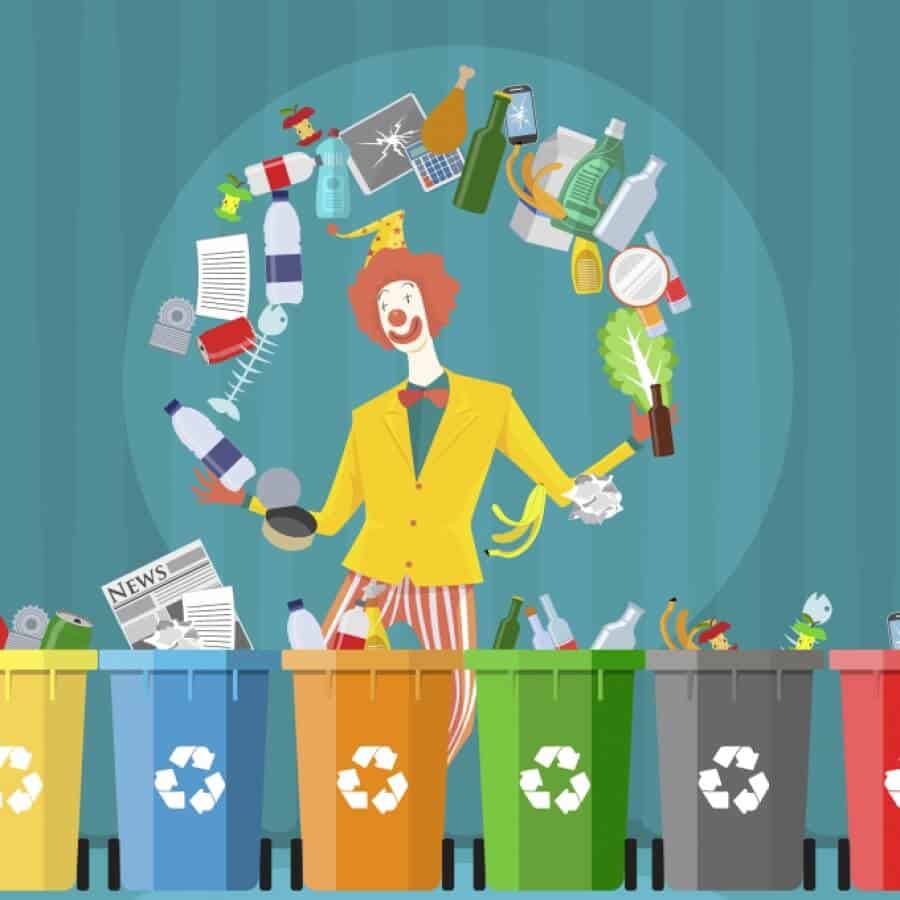A bottle left over from the water – in a yellow container, packaging left over from the milk – in an orange one, a box from the eggs ... Where to put a box left over from the eggs? We are almost accustomed to the fact that the waste that we daily produce in large quantities is subject to classification, and we follow the rules without much consideration. However, it is worthwhile to ask: first, what garbage and where to throw it, and secondly, if it makes sense.
According to the Czech Environmental Information Agency, municipal waste is divided into a number of categories, most of which are mixed wastes (69.2%). They are followed by voluminous bulky waste (8.2%), paper and cardboard (5.7%), glass (1.7%), metals (1.7%), plastic (1.7%), biodegradable waste, street rubbish, rubble, stones, and other stuff. All these types of waste, ideally, should be stored and processed separately. Despite the fact that in the Czech Republic there are more than 272,429 containers for «proper» garbage collection, and the average distance from the house to the nearest container is not more than 97 m (data from the website jaktridit.cz), the same information agency states a sad fact: most waste remains in garbage dumps. This not only excludes the possibility of classification and processing, but also causes significant damage to the environment.
The main argument that environmentalists make, when calling for the sorting of garbage, is that in the processed form it represents a huge stock of raw materials for the production of a mass of necessary things, from sweaters and cables to cardboard boxes and newspapers. According to this calculation, ten redesigned magazines equal one new box for the TV, and 30 plastic bottles can give life to one fleece jacket. That is, instead of tormenting the exhausted planet, drawing fresh wealth from its depths, it is possible to give the planet a respite and restore order to what we already have.
However, on a global scale, order is not yet to be observed for a banal reason. «Despite decades of exhortations and mandates, it’s still typically more expensive for municipalities to recycle household waste than to send it to a landfill», – writes John Tierney, Sunday Review, NY Times. The calls for «green» do not mention that recycling is a miserable attempt to compensate for the impact that we have on our planet, taking into account the growth of the world’s population and the development of technology. «To offset the greenhouse impact of one passenger’s round-trip flight between New York and London, you’d have to recycle roughly 40,000 plastic bottles, assuming you fly coach. If you sit in business- or first-class, where each passenger takes up more space, it could be more like 100,000» – explains Tierny. At the same time, the volume of electronic garbage – laptops, cables, mobile phones – grows by leaps and bounds. In 2012, in the US, this figure was 9 million tons, compared with 2 million tons in 2005, writes Lyndsey Gilpin, of the TechRepublic portal. So the issue of garbage processing remains, rather, on the list of moral principles, rather than among the economically profitable enterprises. To adhere to these principles at least at the local level, as can be seen from concrete examples, is however quite possible. So, the inhabitants of the Japanese mountain village of Kamikatsu by 2015 had learned to process up to 90% of their waste, and intend to abandon the garbage dumps and the processing plant completely by 2020. Against this background, the traditional excuses of a metropolitan inhabitant such as «I have no time», «the container is too far» and others, sound quite ridiculous.
If these phrases do not describe you, and you already throw garbage not in one container, but in several different ones – it goes without saying, that it remains only to make sure that you do it correctly and do not make the most common mistakes. The very egg-box mentioned above must end its life in a container for mixed waste, not for paper – since it is already made from recycled raw materials. A similar story with a cardboard roll from the toilet paper. Be careful with a «take away» cup of coffee: a plastic lid should be put in a yellow plastic container, the cup itself is classified as mixed waste, as it is made of several materials. Together with the cup, we throw out a broken mirror (it’s not glass!), as well as all heavily soiled or fat-impregnated or waxed materials (used paper handkerchiefs, pizza boxes). But batteries, on the contrary, are in the category of toxic waste, so they have nothing to do with the gray container. In short, making the world a little cleaner and better is not as difficult as it seems.
Photos: Shutterstock / collage: Martina Advaney
Support us!
All your donations will be used to pay the magazine’s journalists and to support the ongoing costs of maintaining the site.
Share this post
Interested in co-operating with us?
We are open to co-operation from writers and businesses alike. You can reach us on our email at [email protected]/[email protected] and we will get back to you as quick as we can.









